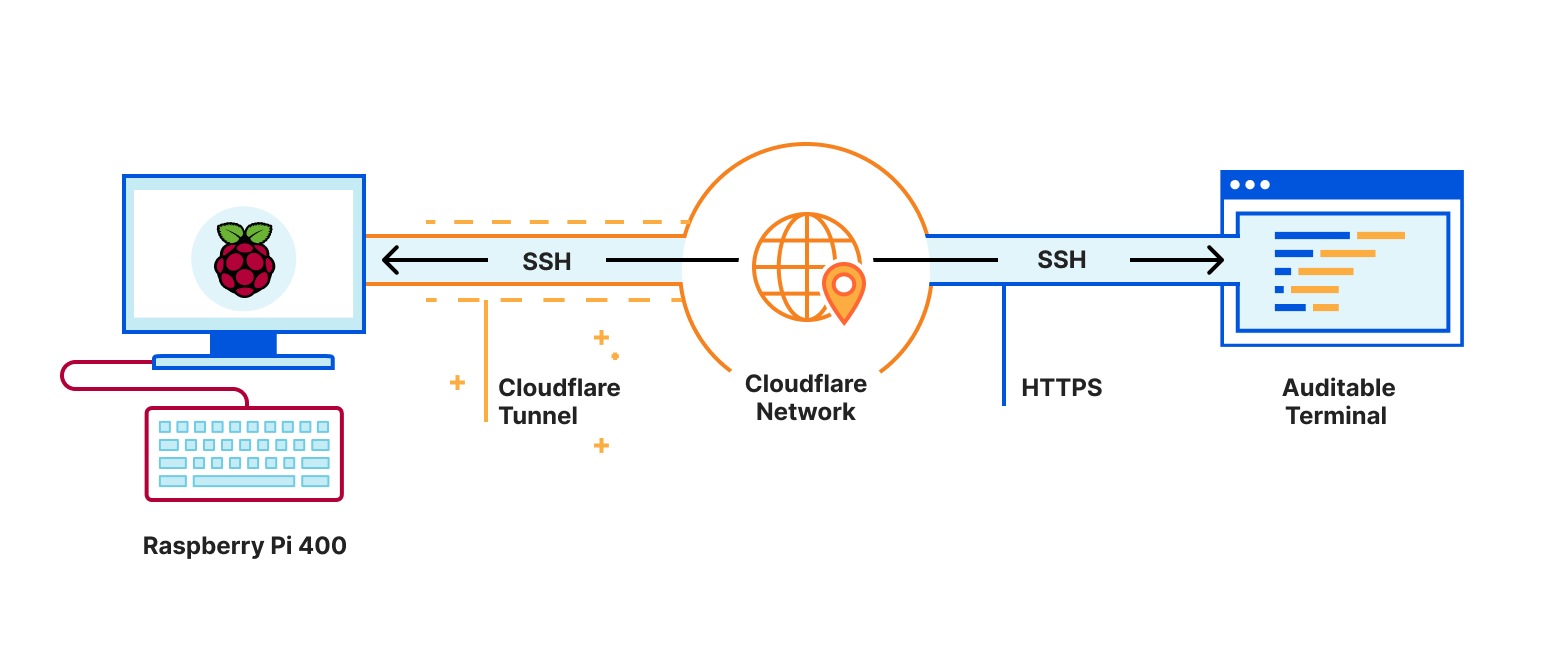

No source code needs to be on your local machine to gain these benefits since the extension runs commands and other extensions directly on the remote machine.

Once connected to a server, you can interact with files and folders anywhere on the remote filesystem.
#RASPBERRY PI SSH TUNNEL FULL#
The Visual Studio Code Remote - SSH extension allows you to open a remote folder on any remote machine, virtual machine, or container with a running SSH server and take full advantage of VS Code's feature set. Configure IntelliSense for cross-compiling.To extend this, one could connect to a VNC server on the Pi through the reverse SSH tunnel by forwarding to e.g. Note: port $tunnel_port can be any unused and open port on the VPS that $vps_user has access to (make sure the port is open in the appropriate firewall otherwise the connection will time out). This can be done using a systemd service unit. In practice, the command in step 5 should be run as a service that starts when the Pi boots up, and restarts if the command exits, in order to keep the tunneled connection active. Now you can execute commands on the Pi without being in the same internal network! From your laptop: ssh -p $tunnel_port This uses the reverse-tunneled SSH connection between the Pi and the VPS to connect the your laptop to the Pi.On the Pi: ssh -R $tunnel_port:localhost:22 This instructs the VPS to forward any connections to $tunnel_port on the VPS to port 22 on the Pi (port 22 is the default port for SSH).On the VPS: configure the SSH server by adding GatewayPorts yes on its own line in /etc/ssh/sshd_config.Log into the VPS, and add the public SSH key of the pi user on the Pi to its own line in /home/$vps_user/.ssh/authorized_keys (same instructions as step 1 apply).
#RASPBERRY PI SSH TUNNEL PASSWORD#
By default, the password to log into the pi user is raspberry.

This setup is described where the internal host is a Raspberry Pi, but can be generalized for any host on the internal network that runs an OpenSSH server. SSH (Secure Shell) to a host existing in an internal network through a reverse-tunneled SSH connection to an externally accessible VPS (Virtual Private Server). Connecting to a Raspberry Pi through a VPS using a reverse SSH tunnel


 0 kommentar(er)
0 kommentar(er)
